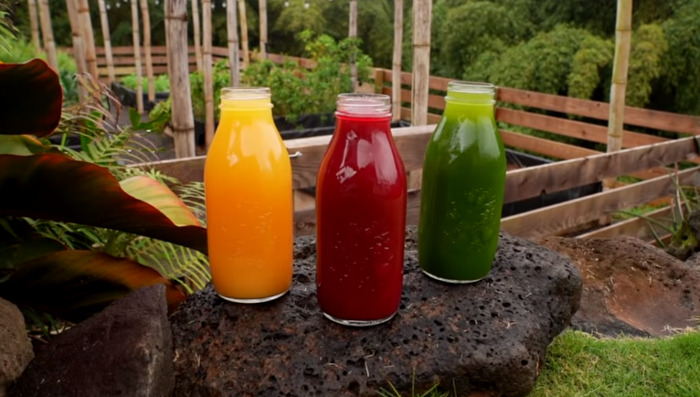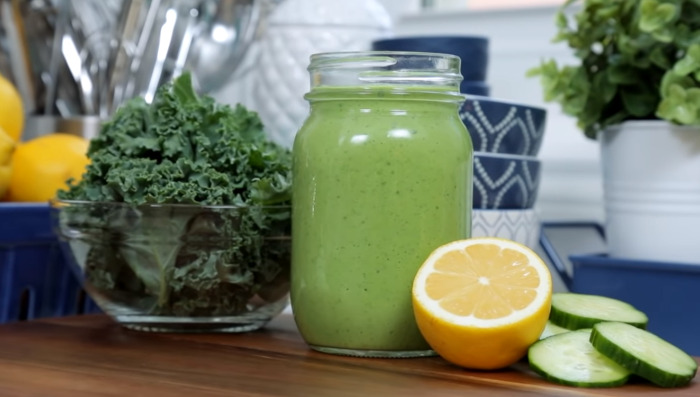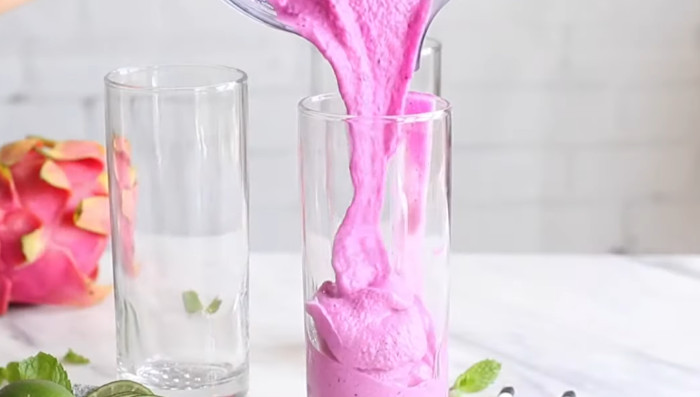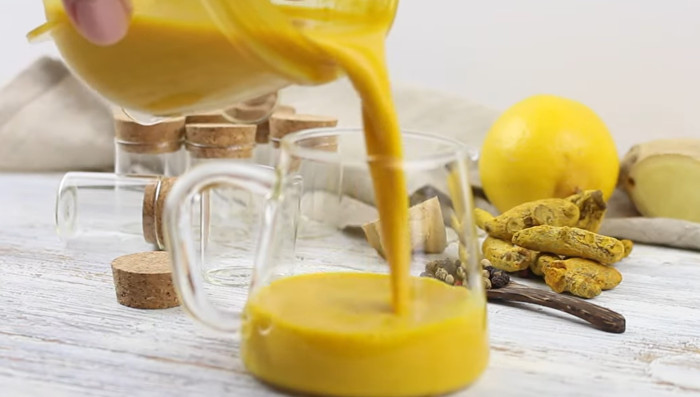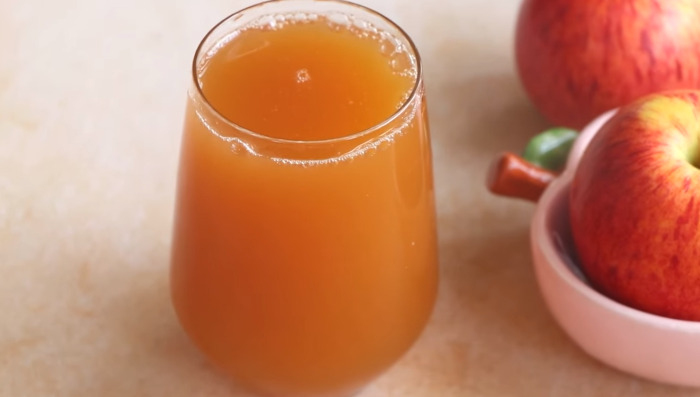Juicing has surged in popularity, and for good reason. It’s a straightforward method to infuse your diet with a burst of essential nutrients. But where do you start? With countless combinations of fruits and veggies, the possibilities can feel overwhelming. Let me simplify it for you. Remember the green juice with kale and apple? Or that refreshing watermelon juice on a hot day? These aren’t just tasty concoctions; they’re nutrient-packed elixirs that can boost your health.
Whether you’re a newbie or a seasoned juicer, the key is to find the right balance. Too much fruit can spike your sugar, while too many veggies might taste, well, too “green.” It’s about finding that sweet spot. Dive in, experiment, and most importantly, enjoy the journey. After all, it’s not just about the destination (or the delicious juice), but the vibrant path of discovery. Let’s embark on this flavorful adventure together.
Equipments used for juicing:
Following are the equipments used for preparing simple juices:
- Juicer Type: Opt for a Breville cold press juicer or an Omega masticating juicer, ensuring efficient juice extraction and ease of cleaning.

- Quality Blender: In the absence of a dedicated juicer, a high-quality blender can also serve the purpose, especially for softer fruits and veggies.
- Produce Selection: Choose a mix of fruits and vegetables, like apples, beets, and carrots, ensuring a balance of flavors and nutrients in your juice.
- Fresh Ingredients: Ensure ingredients like ginger, lemon, or herbs like mint are on hand to enhance flavor and nutritional value.
- Storage: Use airtight containers or tightly sealed glass bottles to store any leftover juice, ensuring it stays fresh for up to 3 days in the fridge.
- Preparation Tools: Have a sturdy cutting board and a sharp knife to efficiently prep your fruits and veggies.
- Strainer: If you prefer a smoother juice, especially when using a blender, a strainer helps remove any unwanted pulp.
- Serving Glasses: Choose appropriate serving glasses to enjoy your juice, considering its visual appeal.
- Cleaning Supplies: Ensure you have suitable cleaning brushes or tools to maintain the hygiene of your juicer or blender.
- Recipe Guide: Keep a simple recipe guide or chart handy for quick and easy reference to create varied juice blends.
5 best simple juice recipes:
1.Green juice:
These are the ingredients and instructions for creating green juice:
Ingredients:
- 2 cups of kale or spinach, ensuring a dark leafy green base for nutrients.
- 1 large cucumber, offering a hydrating element.
- 1 medium-sized apple, any variety, to add a touch of sweetness.
- Juice of 1 lemon, providing a zesty kick and aiding preservation.
- A 1-inch piece of ginger, peeled, to introduce a warming note.
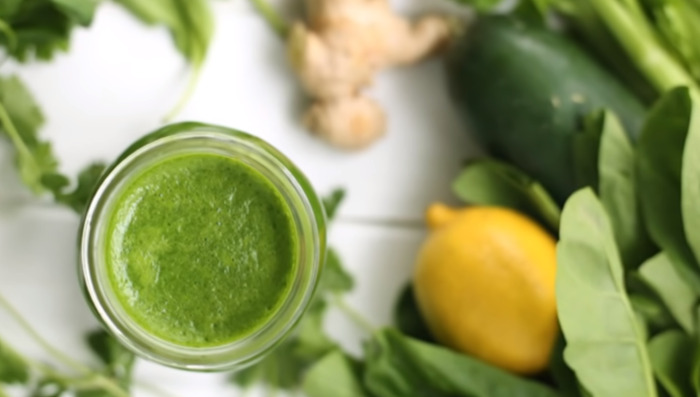
Instructions:
- Prep the Produce: Wash all the fruits and vegetables thoroughly, and peel or trim as necessary.
- Chop Appropriately: Ensure all items are cut into sizes suitable for your juicer or blender.
- Juicing: Gradually feed your ingredients into the juicer, starting with the leafy greens, followed by the former fruits and veggies.
- Blending Alternative: If using a blender, combine all ingredients with a cup of water, blend until smooth, and strain if desired.
- Taste and Adjust: Sample your juice and adjust to taste, perhaps adding a bit more apple for sweetness or lemon for acidity.
- Serve Immediately: Pour into a glass and enjoy immediately to gain the maximum nutritional benefits.
- Store if Needed: If you have leftovers, ensure it’s stored in an airtight container in the fridge and consumed within 3 days.
- Enjoy: Savor the vibrant, nutrient-packed green juice as a refreshing start to your day or a revitalizing afternoon pick-me-up.
2.Watermelon juice:
This watermelon juice, with its natural sweetness, is complemented by the tang of lime and the coolness of mint, creating a refreshing trio that’s not only hydrating but also incredibly flavorful.
Ingredients:
- 4 cups of fresh watermelon chunks, ensuring a sweet and hydrating base.
- Juice of 1 lime, to add a zesty, refreshing twist.
- A small handful of fresh mint leaves, providing a cool, aromatic note.
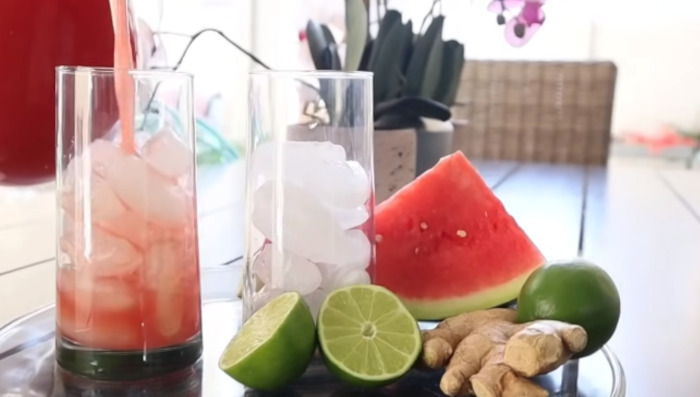
Instructions:
- Select and Prep: Choose a ripe watermelon and cut it into chunks, ensuring seeds are removed. Also, ensure lime is juiced and mint leaves are washed.
- Blending: Add watermelon chunks, lime juice, and mint leaves to the blender, blending until smooth.
- Strain (Optional): For a smoother juice, you may strain it to remove any pulp, using a fine mesh sieve or cheesecloth.
- Serve Chilled: Pour the juice into glasses over ice and garnish with a sprig of mint or a lime wheel for an aesthetic and flavorful touch.
- Adjust if Needed: Taste your juice and if needed, add a bit more lime for an extra kick or mint for freshness.
- Enjoy: Sip and savor the refreshing, hydrating, and naturally sweet beverage, perfect for hot days!
- Store: If there are leftovers, store in an airtight container in the fridge and enjoy within 1-2 days to ensure freshness.
3.Grapefruit juice:
Follow this recipe to create healthy grapefruit juice:
Ingredients:
- 2 large grapefruits, ensuring a tart and vibrant base.
- 1-2 tablespoons of honey or agave syrup, to balance the citrus with sweetness.
- A pinch of salt, to enhance and round out the flavors.

Instructions:
- Preparation: Ensure grapefruits are thoroughly washed and halved. Prepare your sweetener and have salt at hand.
- Juicing: Use a citrus juicer to extract the juice from the grapefruits, capturing the essence of their tartness.
- Sweeten: Add honey or agave syrup to the juice, adjusting to your preferred sweetness level.
- Add Salt: Introduce a pinch of salt, stirring well to ensure it’s dissolved and integrated into the juice.
- Taste and Adjust: Give it a taste and tweak the sweetness of salt as per your liking.
- Serve: Pour the juice into glasses, perhaps over ice, and savor the balanced, refreshing beverage.
- Garnish (Optional): Consider a grapefruit wheel or a sprig of mint for an extra touch of visual appeal.
- Enjoy: Relish the invigorating, slightly sweet, and tantalizingly tart beverage, perfect for a vibrant start to your day or a refreshing pause in the afternoon.
- Store: Keep any leftover juice in an airtight container in the fridge, ensuring you shake or stir before enjoying it again within 48 hours.
4.Carrot juice:
This carrot juice recipe, with its sweet, zesty, and slightly earthy profile, offers not just a refreshing beverage but a nutrient-dense experience.
Ingredients:
- 5 large carrots, providing a sweet and earthy base.
- 1 inch of fresh ginger root, for a zesty kick.
- 1 tablespoon of lemon juice, to brighten the flavors.
- 2 teaspoons of honey, to enhance the natural sweetness.

Instructions:
- Prepare the Carrots: Wash, peel, and chop the carrots into manageable pieces, ensuring a clean and smooth juicing process.
- Prepare the Ginger: Peel and slice the ginger, readying that zesty element.
- Juicing: Feed the carrots and ginger through your juicer, capturing the vibrant, orange essence.
- Add Lemon Juice: Introduce the lemon juice, ensuring a bright and lively note in your beverage.
- Sweeten: Drizzle in the honey, stirring well to incorporate into the juice.
- Taste and Adjust: Sip and adjust the sweetness or lemon as per your palate.
- Serve: Pour into glasses, perhaps over a cube or two of ice, and enjoy the refreshing, nutrient-dense beverage.
- Garnish (Optional): A sprig of parsley or a lemon wheel can add a pop of color and additional flavor notes.
- Enjoy: Savor the sweet, slightly zesty, and utterly refreshing carrot juice, perfect for any time of day.
- Store: If there’s any leftover, ensure it’s stored in an airtight container in the fridge, and enjoyed within 24-48 hours.
5.Beet juice:
Ingredients:
- 3 medium-sized beets, offering a robust, earthy flavor and vivid color.
- 1 green apple, to introduce a touch of sweetness and slight tartness.
- 1-inch piece of ginger, to infuse a warming, spicy note.
- 1 tablespoon of lemon juice, to elevate and balance the flavors.
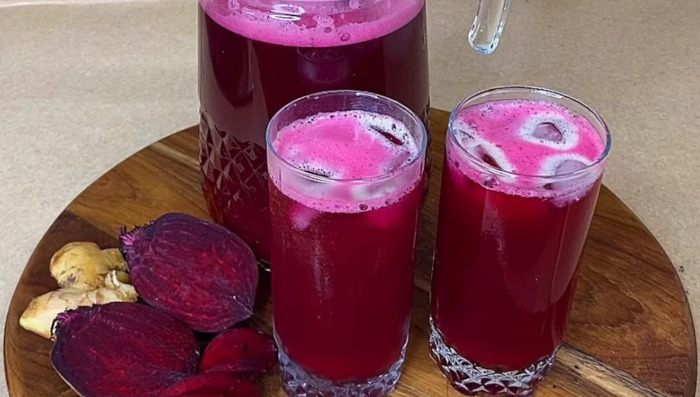
Instructions:
- Prepare the Beets: Thoroughly wash, peel, and chop the beets, ensuring they are juicer-ready.
- Prepare the Apple: Wash, core, and slice the apple, keeping the sweetness on standby.
- Prepare the Ginger: Peel and slice the ginger, readying its spicy, aromatic profile.
- Juicing: Begin by juicing the beets, followed by the apple and ginger, ensuring a blend of sweet, earthy, and spicy notes.
- Add Lemon Juice: Integrate the lemon juice, providing a fresh, balancing acidity to the mix.
- Taste and Adjust: Ensure the flavors are harmonious, adjusting with additional apple or lemon if needed.
- Serve: Pour into glasses, over ice if desired, and savor the rich, vibrant beet juice.
- Garnish (Optional): Consider a sprig of mint or a lemon wheel for an extra flourish and flavor.
- Enjoy: Immerse yourself in the deep, revitalizing flavors of your homemade beet juice.
- Store: Should there be leftovers, store in a sealed container in the fridge and consume within 24-48 hours for optimal freshness.
Health Benefits of juicing:
Juicing offers a plethora of health benefits, from boosting nutrient absorption to promoting better skin health.
1. Nutrient Absorption Boost
Juicing breaks down fruits and vegetables, making the nutrients more accessible for the body. This means that your digestive system doesn’t have to work as hard to extract essential vitamins and minerals. By consuming juice, you’re essentially giving your body a nutrient-rich shot, allowing it to quickly absorb beneficial compounds.
2. Skin Health Promotion
The vitamins and antioxidants in juices can lead to better skin health. For instance, vitamin C found in oranges and strawberries aids in collagen production, ensuring skin remains elastic and youthful.

3. Increased Hydration
Many people struggle to drink the recommended amount of water daily. Juices, primarily made of water, can help meet hydration needs. When you juice water-rich fruits and vegetables like cucumbers or watermelon, you’re not only extracting their flavors but also their hydrating properties.
4. Detoxification
Certain juices, especially those with beets, lemons, and greens, can support the body’s natural detoxification processes. These ingredients aid the liver, our primary detoxifying organ, in flushing out toxins from the body, promoting overall health.
5. Immune System Support
Citrus fruits, berries, and leafy greens are packed with vitamin C and other antioxidants. Regularly consuming these in juice form can bolster the immune system, making it more robust in warding off illnesses.
6. Enhanced Energy Levels
The direct nutrient hit that juicing provides can lead to an energy boost. Instead of turning to caffeine or sugar for a pick-me-up, a fresh juice can offer a natural surge of energy, thanks to its rich vitamin and mineral content.
7. Improved Digestion
Ingredients like ginger or apple in juices can promote better digestion. Ginger, for instance, has properties that can soothe the stomach and reduce bloating, while apple provides necessary fiber for gut health.
8. Weight Management
When incorporated into a balanced diet, juicing can aid in weight management. Low-calorie, nutrient-rich juices can be satisfying without the added calories, making them a smart choice for those watching their weight.
Wrapping up:
Juicing, a practice rich in tradition and innovation, offers a myriad of health benefits. From the simple pleasures of crafting a refreshing watermelon or invigorating green juice to understanding the profound health advantages like enhanced nutrient absorption and detoxification, the journey through juicing is enlightening. Essential equipment ensures the best juice extraction, while the right recipes guarantee taste and nutrition.
Beyond the immediate sensory delight, the long-term benefits, such as bolstered immunity, improved digestion, and skin health, make juicing a worthy addition to any dietary regimen. As we’ve delved into the world of juicing, it’s evident that it’s more than just a trend; it’s a lifestyle choice backed by science and experience. Whether you’re a novice or a seasoned juicer, the path to wellness through juicing is clear, actionable, and, most importantly, delicious. Dive in, and let your health flourish.
FAQs:
What’s the best kind of juicer to use?
Selecting the optimal juicer involves considering ease of use, cleaning, and, crucially, nutrient preservation. Cold-pressed juicers, particularly masticating types, are stellar for retaining vital nutrients and enzymes, ensuring your juice is as nutritious as possible. They operate at lower speeds, minimizing heat generation, which can degrade nutritional value. Moreover, they efficiently extract juice, providing a higher yield from your fruits and vegetables, making them a cost-effective and health-enhancing choice for your juicing journey.
What is the 80 20 rule for juicing?
The 80-20 rule for juicing emphasizes a blend of 80% vegetables and 20% fruits in every juice concoction to maintain a balanced sugar content. This guideline ensures you reap the extensive nutrient benefits from vegetables while the fruit component adds a palatable sweetness, making your juice both nutritious and delicious. Adhering to this rule assists in crafting juices that are not only tantalizing to the taste buds but also healthful and energizing for the body.
What is the healthiest juice to drink daily?
The healthiest juice to drink is one that combines a variety of nutrient-dense vegetables with a small portion of fruit to add natural sweetness. A popular choice is green juice, made predominantly from green vegetables like kale, spinach, and celery, and sweetened slightly with an apple or a pear. This concoction ensures you’re maximizing nutrient intake, such as vitamins and minerals, while keeping sugar content in check, adhering to the beneficial 80-20 rule of juicing.
Is 100% juice healthier than water?
While 100% juice provides essential vitamins and minerals, it isn’t necessarily healthier than water. Water is crucial for hydration without adding any calories or sugar to your diet. Juice, even 100%, contains natural sugars and calories, which, when consumed in excess, can contribute to increased caloric intake. Balancing juice with ample water consumption ensures you gain nutritional benefits while maintaining optimal hydration. Always prioritize water for hydration and enjoy juice as a nutritious supplement.

